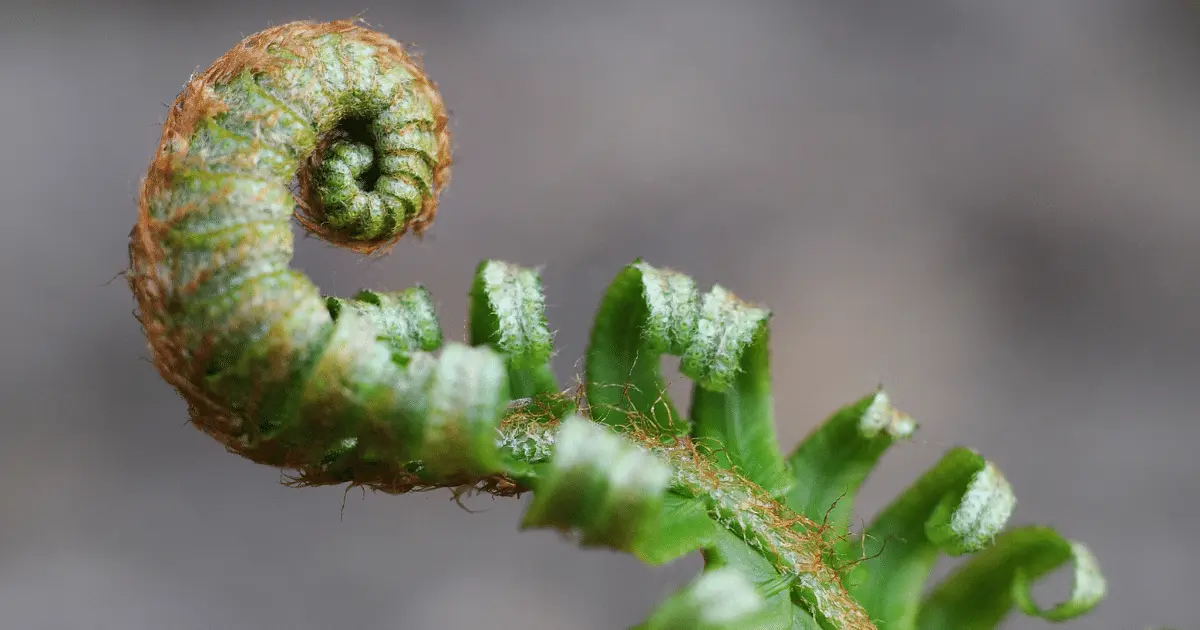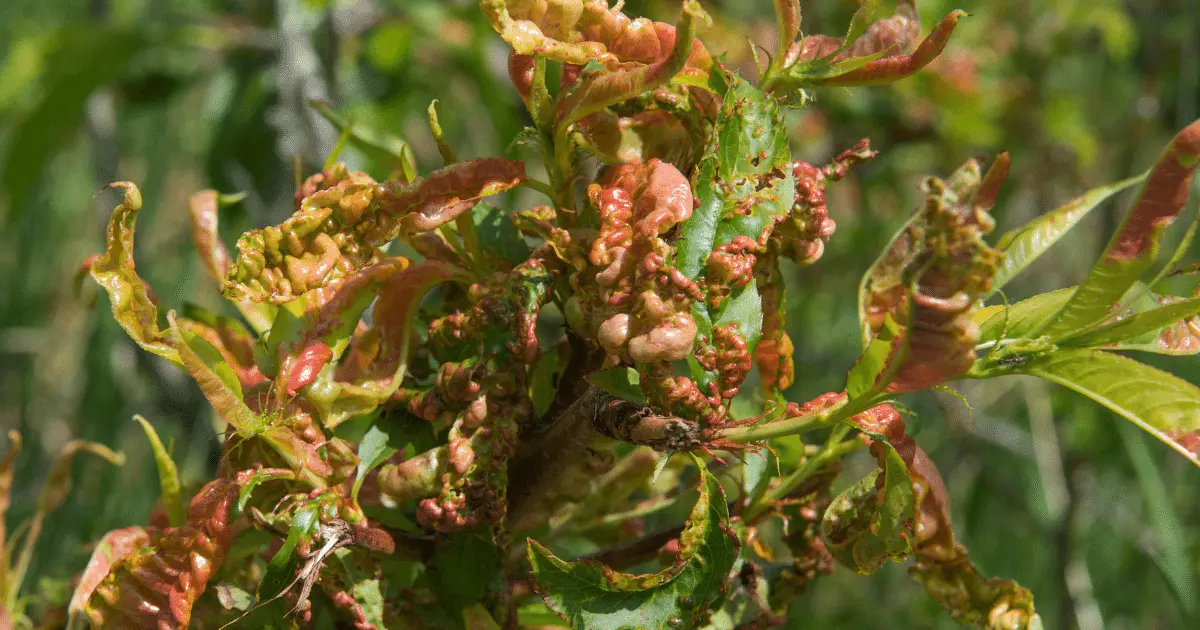What does a beautiful garden look like? There are many different sizes and forms of leaves. Most leaves are flat, wide, and usually green in color, and flowering plants add to the beauty of any garden. This is what a beautiful garden should look like colorful and radiant.
Although we all want our gardens to be beautiful, it can be unsettling to notice curled leaves on your houseplants, and you don’t need to panic. Instead, take a deep breath and investigate what the curls on your plants are attempting to tell you.
What Does A Leaf With A Curling Edge Indicate?

New leaf growth, pests, disease, an insufficient watering schedule, poor placement, or a lack of essential nutrients typically cause leaves to curl on edge.
Your plant should be able to return to normal fairly soon if you find out what is causing the curling. However, if curled leaves continue, it is best to remove them so your plant can save its energy for healthy leaves.
What Leads To Curled Plant Leaves And How To Straighten Out The Edges?
Taking proper care of your plants is the greatest way to ensure their continued health. You can straighten your curled edge leaves if you follow this guild.
Here is a thorough description of some of the problems that could result in curling leaves on your garden plant, along with instructions on how to correct them and prevent them in the future so your plants won’t experience them.
1. New Leaves Or Old Dyeing Leaves
As we are all aware, everything has a beginning and an end. The same is true for plants, and as leaves grow, many naturally curl, their leaves are younger, and leaves look more delicate than older leaves.y
For old curling leaves, the case is different; the best way to resolve such problems is by trimming old dying, curled, and fading leaves from your plants to make them appear radiant and healthy. Old plant leaves also die when they have outlived their lives, this cannot be fixed as it is a natural event that necessitates happening.
2. Overwatering
Overwatering can cause root rots, which can cause leaves to curl. Because of this, it advised providing water to the plant just when necessary and not always.
Morning and evening are the optimum times to water plants; It is better to water in the morning rather than the evening so the plant can dry before dusk.
How To Correct It
In cases of overwatering, repot the plant in a new pot and soil. Water the plant only when the soil is moist. You should know when to water the plant.
Make sure surplus water in potted plants drains swiftly away from the roots, Don’t water at night since water tends to congregate at night in the soil around the roots; also, don’t put small plants in big containers. This is very important.
3. Heat Stress
Plants curl up to retain moisture while under heat stress because it causes rapid evaporation. Heat stress can be a concern in any space where the temperature is consistently above 80 degrees, but it is more common in plants that are too close to high-intensity lighting.
How To Correct It
Install fans to push heated air out and bring in fresher, cooler air for indoor Plants.
Water Bottle Method
Alternatively, you can use the bottled water method; make sure your plastic bottle is approximately the same height as your plant.
- Open the water can you are using by cutting the bottom off it.
- Before you plant a new sprout, bottle open water into the ground.
- On hot days, fill the bottle with water; this helps to cool the roots.
4. Little Or Too Much Light
Since low light levels impact many plants, don’t keep your plant in a particularly dark or shaded spot for an extended period, as this may result in curled and soggy leaves.
If your plant receives too much light or is too hot, the leaves may curl, especially as they age and the tips begin to curl. Excessive light is likely to be the issue if the newer leaves are smaller than anticipated and have brown tips, and the older leaves are curling.
How To Correct It
Move your houseplant to a spot that receives more suitable light for the type of plant you have to cure curled leaves caused by excessive light. Ensure that you stick to these requirements and if you think that your plant is suffering from too much sunlight or little light.
5. Chemical Damage From Herbicides
If you decide to use herbicides, it is crucial to ensure they are directed solely at the weeds you want to eradicate. Most herbicides kill plants without regard to their species, and those that get on your cherished plants are likely to do irreversible harm.
Also, you might be adding copper to your plant without knowing, which could kill it.
How To Correct It
Before using any herbicides, find out their content and how effective it is. Unaware of the damage a copper watering can cause, you may have been using one, so stop using it.
6. Pest
It would be best to determine whether the pests reside in your plant’s, if so, try to get rid of them immediately because these pests are typically suckers that rob plants’ leaves of their nutrition, causing them to curl.
It is very challenging to see whitefly on the surface of the plant’s leaves. They frequently reside at the base of the plant; you might notice little holes in the soil, and pests go in and cause damage.
How To Correct It
You can use insecticide to spray to get rid of bugs. Try using soapy water as an alternative to insecticides if you don’t want to. Additionally, you can use some rubbing alcohol or gentle herbicides that won’t harm the leaves. Repeat applications until all pests have been eliminated.
Additionally, there are several herbs like basil, catnip, mint, lemongrass, sage, and others that naturally ward them off. You may quickly get rid of those bugs in your garden by planting one or more.
7. Lack of Nutrition
Your plants’ survival instinct will take over during nitrogen deprivation and direct their nitrogen reserves to the fresher leaves. As a result, the older leaves towards the plant’s base will experience the greatest deficit and curl up.
Plants furthermore require phosphorus. Plant leaves turn bluish when there is a phosphorus deficiency, and older leaves tend to dry out and fall off the plant without nourishment.
If left untreated, phosphorus shortage typically manifests at the base of the plant (on the oldest leaves) and progresses upward. The peak phosphorus demand for many crops occurs as they shift from vegetative growth to flourishing.
Lack of fertilization or applying fertilizers with insufficient nitrogen levels is likely the cause of nitrogen deficiency.
How To Correct It
To treat a lack of nitrogen in plants, and after treatment, recovery should happen quickly. Purchase a nitrate-based fertilizer. Put it in the soil, and frequently give your plants supplements of amino acids as a treatment, your plant can generate protein thanks to amino acids, and protein aids in the uptake and utilization of nitrogen.
Without enough potassium, your plant will deteriorate; typical signs of potassium shortage include yellowing and curling of the leaves’ tips. When you notice this, use a fertilizer with appropriate potassium.
8. Disease

We all like seeing plants bloom, whether in our homes, our gardens, or their natural environments, and disease could cause curling leaves and make plant leaves look dull.
The red color and twisted shape of diseased leaves may generally be recognized shortly after they emerge from the bud. As the leaves grow, they become thicker and more rubbery than typical leaves before becoming further deformed. In addition to their usual green hue, leaves can turn crimson and change color.
How To Correct It
In terms of diseases, first, isolate the affected plant from the others before determining whether a cure is available. It is frequently preferable to eradicate the worst afflicted regions from major infestations.
Use herbicides to treat the plant. Cut off the diseased leaves as well, then let the new growth form. To stop further curling, be careful to adhere to the herbicide’s directions. Herbicide overuse can result in the loss of the entire plant.
9. Extremely Dry Air
Dry air is another issue that can cause your garden or indoor plant’s leaves to curl. Keeping plants in extremely dry houses is not a good idea; try measuring your home’s humidity.
How To Correct It
The greatest solution is to raise the humidity levels in your home. Although there are numerous ways to accomplish this, purchasing a humidifier is the simplest.
You can get a compact humidifier intended to be placed in the space where you keep your houseplants. A sizable humidifier can also be a smart investment because it can help your home’s humidity levels when the air is very dry.
Can Curling Leaves Be Physically Straightened?
You can do it, but it won’t make a difference because the problem with curling up leaves is from the inside, not the outside. Even if you physically straightened the curled leaves, they wouldn’t straighten. Try fixing the curling from the inside; if leaves on your plant are dead or haven’t bounced back after trying to revive it, younger leaves, in particular, are likely to regenerate on their own, whereas more mature leaves might not.
Remove any leaves that are curling on the edge if they don’t revive after trying to revive them.
Leaves of garden plants curl when there are problems with pest infestation, inadequate fertilizer, excessive watering that could cause root rot, too much light, inadequate watering, and many other things.
If you have different types of plants in your garden, I’m sure you constantly want to see them getting nourishment and being healthy because the plant leaves enhance your garden’s appearance and clean the air around your home.
